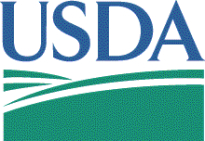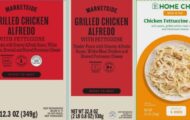The USDA announced on Tuesday that a new case of bovine spongiform encephalopathy (BSE), popularly known as “mad cow disease” was discovered in a dairy cow in California.
 USDA Chief Veterinary Officer John Clifford said in a statement, “the carcass of the animal is being held under State authority at a rendering facility in California and will be destroyed. It was never presented for slaughter for human consumption, so at no time presented a risk to the food supply or human health. Additionally, milk does not transmit BSE.”
USDA Chief Veterinary Officer John Clifford said in a statement, “the carcass of the animal is being held under State authority at a rendering facility in California and will be destroyed. It was never presented for slaughter for human consumption, so at no time presented a risk to the food supply or human health. Additionally, milk does not transmit BSE.”
Agriculture Secretary Tom Vilsack also issued a statement saying, “the beef and dairy in the American food supply is safe and USDA remians confident in the health of us cattle.”
There have been four confirmed cases of BSE in cows in the United States. The USDA tests 40,000 cows a year for the disease. Cows usually contract the disease when they eat feed that contains the BSE prion from cattle brain, spinal cord, or digestive tracts. Humans can acquire a form of BSE called Creutzfeldt-Jakob disease by eating infected beef.
In 1993, there was a massive BSE outbreak in the UK that killed 150 people. Ranchers there added recycled bone meal and meat from infected cows directly to cattle feed. In 1992 there were 37,311 cases of BSE worldwide. Last year there were only 29 cases worldwide. That decline is attributed to feed bans.
This was a very rare, “atypical” case of BSE caused by a random mutation, not related to the type cows can develop when they eat infected feed. In 2008, the FDA made changes to animal feed regulations, prohibiting the use of “high-risk cattle material in feed” for all animal species.
Dr. Alfredo DiCostanzo, Professor at the Department of Animal Science at the University of Minnesota told Food Poisoning Bulletin, “Based on the surveillance effort, and decreasing likelihood of finding cattle with BSE derived from consuming mammalian proteins, concentrating BSE surveillance on ‘downer’ cows and, removing specified risk material from cattle aged 30 months or older, the risk BSE transmission is effectively low.”
These are the animal products that cannot be used in animal feed:
- The entire carcass of BSE-positive cattle
- Brains and spinal cords of cattle 30 months of age and older
- Carcasses of cattle 30 months of age or older from which brains and spinal cords were not effectively removed or excluded from animal feed.
- Animal liver
- Cooked bone marrow
- Salvage pet food
- Unborn calf carcasses
But these animal materials can be used in animal feed:
- Blood and blood products
- Milk products
- Pure pork protein
- Pure horse protein
- Pure poultry protein
- Pure fish protein
- Gelatin
Dr. Ron Chapman, the director of the California Department of Public Health, said, “there is no public health threat due to the discovery of BSE in a dairy cow. The food supply in California has not been affected by this discovery, and residents do not need to take any specific precautions.”
The Center for Science in the Public Interest agrees with the government assessment, but they did say that the United States animal identification system is poorly run. CSPI food safety attorney Sarah Klein said in a statement, “If the cow were exposed to a typical strain of BSE via animal feed – and the government says that’s not the case here – that would have represented a significant failure. The government’s ability to track down other cattle that may have been exposed via feed would have been hampered without an effective animal I.D. Program.”
In January, Rep. Gary Ackerman (D-NY) and Peter King (R-NY) introduced a bill to permanently ban downer animals from entering the food chain.




